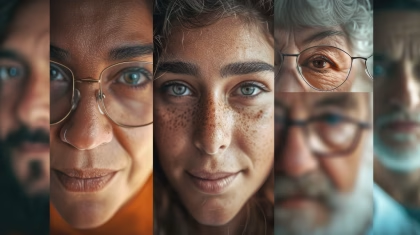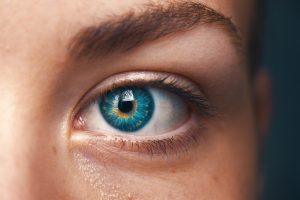This article provides a comprehensive overview of the various methodologies and principles used in studying human behavior. From observational studies to controlled experiments, this article delves into the intricacies of behavioral research, offering valuable insights for both seasoned researchers and beginners in the field.
Table of Contents
- Introduction to Human Behavior Research and Studies
- Free 52-page Human Behavior Guide
- So What Exactly is Behavior?
- What is the Study of Human Behavior?
- Everything is Connected
- Takeaways: What You Should Know…
- Learning and Behavior
- Classical Conditioning
- Operant Conditioning
- Decisions and Behavior
- Getting Started with Human Behavior Research
- Measuring Human Behavior
- Biosensors for Learning About Human Behaviour
- How to Put it Together for Human Behavior Psychology
- Human Behavior Metrics
- Application Fields in Study of Human Behavior Psychology
- Conclusion
- Free 52-page Human Behavior Guide
Introduction to Human Behavior Research and Studies
Academic and commercial researchers alike are aiming toward a deeper understanding of how humans act, make decisions, plan, and feel. Advances in wearable sensor technology along with procedures for multi-modal data acquisition and analysis have lately been enabling researchers all across the globe to tap into previously unknown secrets of the human brain and mind.
Still, as emphasized by Makeig and colleagues (2009), the most pivotal challenge lies in the systematic observation and interpretation of how distributed brain processes support our natural, active, and flexibly changing behavior and cognition.
We all are active agents, continuously engaged in attempting to fulfill bodily needs and mental desires within complex and ever-changing surroundings while interacting with our environment. Brain structures have evolved that support cognitive processes targeted towards the optimization of outcomes for any of our body-based behaviors.
In this complete guide to understanding human behavior research, you’ll get a full run-down of how to get started with analyzing the systems, emotions and cognition that make humans tick, using scientifically credible methods such as biosensor research.
If instead you would like to just get a quick overview of application areas, check out our list of 100 different applications.
N.B. this post is an excerpt from our Human Behavior Guide. You can download your free copy below and get even more insights into human behavior.
Free 52-page Human Behavior Guide
For Beginners and Intermediates
- Get accessible and comprehensive walkthrough
- Valuable human behavior research insight
- Learn how to take your research to the next level

So What Exactly is Behavior?
In scientific research, human behavior is a complex interplay of three components: actions, cognition, and emotions.
Sounds complicated? Let’s address them one by one.
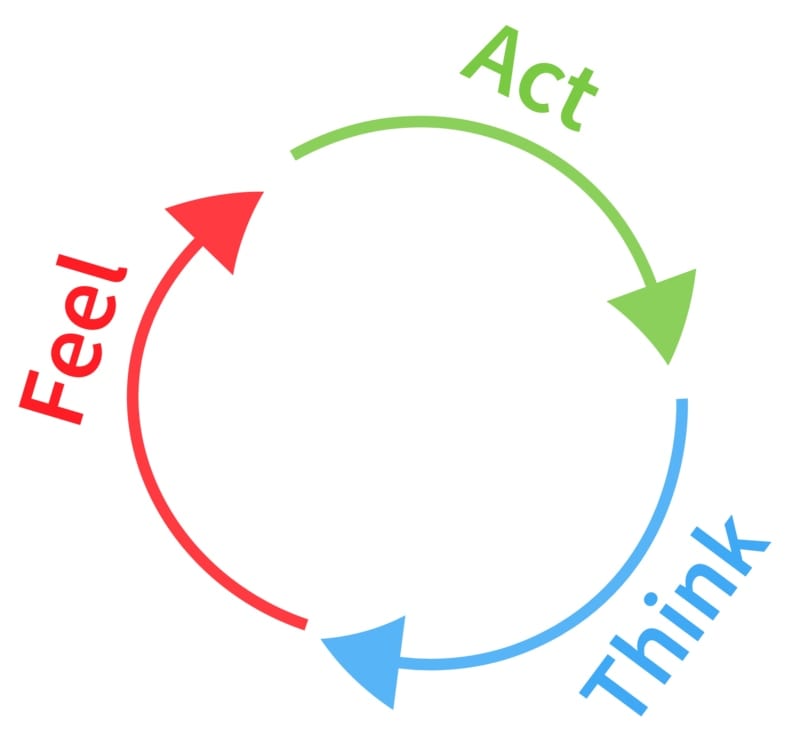
Actions are Behavior
An action denotes everything that can be observed, either with bare eyes or measured by physiological sensors. Think of an action as an initiation or transition from one state to another – at a movie set, the director shouts “action” for the next scene to be filmed.
Behavioral actions can take place on various time scales, ranging from muscular activation to sweat gland activity, food consumption, or sleep.
Cognitions are Behavior
Cognitions describe thoughts and mental images you carry with you, and they can be both verbal and nonverbal. “I have to remember to buy groceries,” or “I’d be curious to know what she thinks of me,” can be considered verbal cognitions. In contrast, imagining how your house will look like after remodeling could be considered a nonverbal cognition.
Cognitions comprise skills and knowledge – knowing how to use tools in a meaningful manner (without hurting yourself), sing karaoke songs or being able to memorize the color of Marty McFly’s jacket in “Back to the Future” (it’s red).
Emotions are Behavior
Commonly, an emotion is any relatively brief conscious experience characterized by intense mental activity, and a feeling that is not characterized as resulting from either reasoning or knowledge. This usually exists on a scale, from positive (pleasurable) to negative (unpleasant).
Other aspects of physiology that are indicative of emotional processing – such as increased heart rate or respiration rate caused by increased arousal – are usually hidden to the eye. Similar to cognitions, emotions cannot be observed directly. They can only be inferred indirectly by tracking facial electromyographic activity (fEMG), analyzing facial expressions, monitoring arousal using ECG, galvanic skin response (GSR), respiration sensors, or self-reported measures, for example.
What is the Study of Human Behavior?
The study of human behavior is a fascinating and complex field that delves into the myriad ways individuals think, act, and interact. This multidisciplinary approach draws from psychology, sociology, anthropology, and even biology to provide comprehensive insights into human actions and societal dynamics.
Exploring Human Behavior Studies
Human behavior studies strive to understand the ‘why’ behind actions and reactions. This exploration involves examining both innate and learned behaviors, how environmental factors shape actions, and the impact of mental processes on decision-making. Researchers employ various methods, from controlled laboratory experiments to field observations, ensuring a holistic understanding of human behavior in diverse contexts.
Significance of Studying Humans
Understanding human behavior is crucial for numerous reasons. It aids in predicting responses in different situations, which is invaluable in areas like marketing, policy-making, and therapy. Additionally, studying behavior helps address social issues, improve educational approaches, and enhance interpersonal relationships. By understanding the underlying motivations and factors influencing actions, we can foster more empathetic and effective interactions within society.
Applying Insights from Human Behavior Studies
The practical applications of human behavior studies are vast and varied. In healthcare, these insights assist in developing better patient care strategies and public health initiatives. In business, understanding consumer behavior drives marketing and product development. In education, insights into learning patterns lead to more effective teaching methods. Furthermore, in the realm of public policy, this knowledge informs laws and regulations that consider the behavioral tendencies of the populace.
The study of human behavior is not just an academic pursuit but a tool that, when wielded wisely, can significantly enhance the quality of life and societal progress. This field continues to evolve, promising even greater insights and applications in the future.
Everything is Connected
Actions, cognitions and emotions do not run independently of each other – their proper interaction enables you to perceive the world around you, listen to your inner wishes and respond appropriately to people in your surroundings. However, it is hard to tell what exactly is cause and effect – turning your head (action) and seeing a familiar face might cause a sudden burst of joy (emotion) accompanied by an internal realization (cognition):
Action = emotion (joy) + cognition (“hey, there‘s Peter!”)

In other cases, the sequence of cause and effect might be reversed: Because you’re sad (emotion) and ruminating on relationship issues (cognition), you decide to go for a walk to clear your head (action).
Emotion (sadness) + cognition (“I should go for a walk“) = action
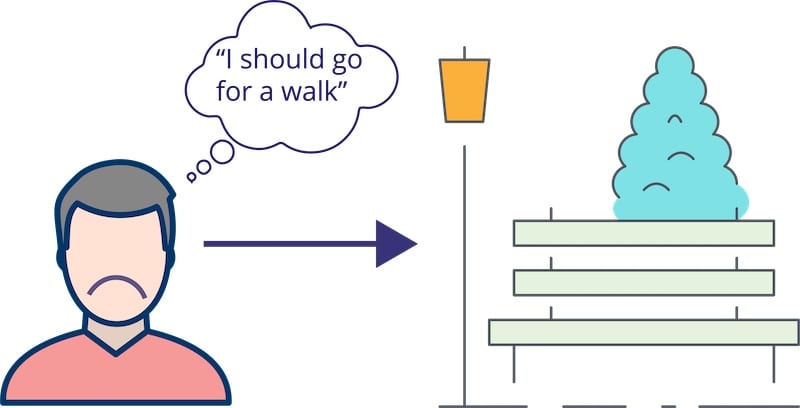
Takeaways: What You Should Know…
Humans are active consumers of sensory impressions
You actively move your body to achieve cognitive goals and desires, or to get into positive (or out of negative) emotional states. In other words: While cognition and emotion cannot be observed directly, they certainly drive the execution of observable action. For example, through moving your body to achieve cognitive goals and desires, or to get into positive (or out of negative) emotional states.
Cognitions are specific to time and situations
The former is important as you have to couple responses dynamically to stimuli, dependent on intentions and instructions. This allows you to respond to one and the same stimulus in near-unlimited ways. Stability, by contrast, is crucial for maintaining lasting stimulus-response relationships, allowing you to respond consistently to similar stimuli.
Imagination and abstract cognition are body-based
Even abstract cognitions (devoid of direct physical interaction with the environment) are body-based. Imagining limb movements triggers the same brain areas involved when actually executing the movements. When you rehearse material in working memory, the same brain structures used for speech perception and production are activated (Wilson, 2001).
Get a Demo
We’d love to learn more about you! Talk to a specialist about your research and business needs and get a live demo of the capabilities of the iMotions Research Platform.
Learning and Behavior
When we talk about behavior, we need to consider how it is acquired. Learning denotes any acquisition process of new skills and knowledge, preferences, attitudes and evaluations, social rules and normative considerations.
You surely have heard of the “nature – nurture” debate – in the past, there has been quite some fighting about whether behavior was solely driven by genetic predispositions (nature) or environmental factors (nurture).
Today, it’s no longer a question of either/or. There simply is too much evidence for the impact of nature and nurture alike – behavior is considered to be established by the interplay of both factors.
Current theoretical frameworks also emphasize the active role of of the agent in acquiring new skills and knowledge. You are able to develop and change yourself through ongoing skill acquisition throughout life, which can have an impact on a neurological level. Think of it as assigning neuroscientific processes to the phrase “practice makes perfect”.
Classical Conditioning
Classical conditioning refers to a learning procedure in which stimulus-response pairings are learned – seeing tasty food typically triggers salivation (yummy!), for example. While food serves as unconditioned stimulus, salivation is the unconditioned response.
Unconditioned stimulus -> unconditioned response
Seeing food -> salivation

If encountering food is consistently accompanied by a (previously) neutral stimulus such as ringing a bell, a new stimulus-response pairing is learned.
unconditioned stimulus + conditioned stimulus -> unconditioned response
seeing food + hearing bell -> salivation

The bell becomes a conditioned stimulus and is potent enough to trigger salivation even in absence of the actual food.
conditioned stimulus – > response
hearing bell -> salivation
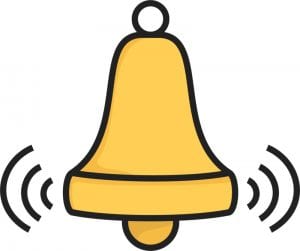
Described as generalization, this learning process was first studied by Ivan Pavlov and team (1927) through experiments with dogs, which is why classical conditioning is also referred to as Pavlovian conditioning.
Today, classical conditioning is one of the most widely understood basic learning processes.
Operant Conditioning
Operant conditioning, also called instrumental conditioning, denotes a type of learning in which the strength of a behavior is modified by the consequences (reward or punishment), signaled via the preceding stimuli.
In both operant and classical conditioning behavior is controlled by environmental stimuli – however, they differ in nature. In operant conditioning, behavior is controlled by stimuli which are present when a behavior is rewarded or punished.
Operant conditioning was coined by B.F. Skinner. As a behaviorist, Skinner believed that it was not really necessary to look at internal thoughts and motivations in order to explain behavior. Instead, he suggested to only take external, observable causes of human behavior into consideration.
According to Skinner, actions that are followed by desirable outcomes are more likely to be repeated while those followed by undesirable outcomes are less likely to be repeated. In this regard, operant conditioning relies on a fairly simple premise: Behavior that is followed by reinforcement will be strengthened and is more likely to occur again in the future.

The key concepts of operant conditioning are:
- Positive reinforcement (otherwise known just as reinforcement) occurs when a behavior is rewarding, increasing the frequency of that behavior.
- Negative reinforcement (escape) occurs when a behavior is followed by the removal of an aversive stimulus, increasing the frequency of the behavior.
- Punishment occurs when a behavior is followed by an aversive stimulus, causing a decrease in that behavior.
- Penalty occurs when a behavior is followed by the removal of a rewarding stimulus
- Extinction occurs when a behavior that had previously been reinforced is no longer effective.
These learning theories give guidance for knowing how we gather information about the world. The way in which we learn is both emotionally and physiologically appraised. This will have consequences for how we act, and carry out behaviors in the future – what we attend to, and how it makes us feel.

Decisions and Behavior
While behavior is acquired through learning, whether the acting individual decides to execute an action or withhold a certain behavior is dependent on the associated incentives, benefits and risks (“if Peter was penalized for doing this, I certainly won‘t do it!”).
But which are the factors driving our decisions? Theories such as social learning theory provide a base set of features, but one of the most influential psychological theories about decision-making actually has its origins in an economics journal.
In 1979, Daniel Kahneman & Amos Tversky published a paper proposing a theoretical framework called the Prospect Theory. This laid the foundations for Kahneman’s later thoughts and studies on human behavior, that was summarized in his bestselling book “Thinking, Fast and Slow”.

System 1 and System 2
Kahneman‘s theories were also concerned with how people process information. He proposed that there are two systems that determine how we make decisions: System 1 – which is fast but relatively inaccurate, and system 2 – which is slow but more accurate.
The theory suggests that our everyday decisions are carried out in one of these two ways, from buying our morning coffee, to making career choices. We will use different approaches depending on the circumstances.

Decision-making and Emotions
Human behavior and decision-making are heavily affected by emotions – even in subtle ways that we may not always recognize. After making an emotionally-fueled decision, we tend to continue to use the imperfect reasoning behind it, and “a mild incidental emotion in decision-making can live longer than the emotional experience itself” as pointed out by Andrade & Ariely (2009).
An example of mood manipulation affecting decision making was completed by researchers who wanted to know how a willingness to help could be affected by positive feelings.
To study their question, they placed a Quarter (25ct) clearly visible in a phone booth (yes, these things actually existed!) and waited for passers-by to find the coin. An actor working on behalf of the psychologist stepped in, asking to take an urgent phone call. Study participants who actually found the coin were significantly happier, allowing the confederate to take the call, while those who didn’t find the coin were unaffected, and more likely to say no (Isen & Levin, 1972).

Getting Started with Human Behavior Research
Research on human behavior addresses how and why people behave the way they do. However, as you have seen in the previous sections, human behavior is quite complex as it is influenced, modulated and shaped by multiple factors which are often unrecognized by the individual: Overt or covert, logical or illogical, voluntary or involuntary.
Conscious vs. unconscious behavior
Consciousness is a state of awareness for internal thoughts and feelings as well for proper perception for and uptake of information from your surroundings.
A huge amount of our behaviors are guided by unconscious processes. Just like an iceberg, there is a great amount of hidden information, and only some of it is visible with the naked eye.
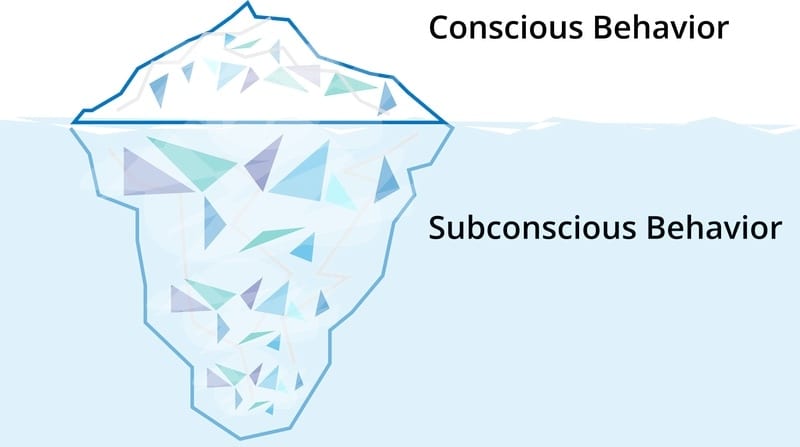
Overt vs. covert behavior
Overt behavior describes any aspects of behavior that can be observed, for example body movements or (inter-)actions. Also, physiological processes such as blushing, facial expressions or pupil dilation might be subtle, but can still be obeserved. Covert processes are thoughts (cognition), feelings (emotion) or responses which are not easily seen. Subtle changes in bodily processes, for instance, are hidden to the observer‘s eye.
In this case, bio- or physiological sensors are used to aid the observation with quantitative measures as they uncover processes that are covert in the first place. Along this definition, EEG, MEG, fMRI and fNIRS all monitor physiological processes reflecting covert behavior.
Rational vs. irrational behavior
Rational behavior might be considered any action, emotion or cognition which is pertaining to, influenced or guided by reason. In contrast, irrational behavior describes actions that are not objectively logical.
Patients suffering from phobias often report an awareness for their thoughts and fears being irrational (“I know that the spider can‘t harm me”) – albeit they still cannot resist the urge to behave in a certain way.

Voluntary vs. involuntary behavior
Voluntary actions are self-determined and driven by your desires and decisions. By contrast, involuntary actions describe any action made without intent or carried out despite an attempt to prevent it. In cognitive-behavioral psychotherapy, for example, patients are exposed to problematic scenarios, also referred to as flooding, such as spiders, social exhibition or a transatlantic plane ride.

Many of our behaviors appear to be voluntary, rational, overt, and conscious – yet they only represent the tip of the iceberg for normal human behavior. The majority of our actions are involuntary, potentially irrational, and are guided by our subconscious. The way to access this other side of behavior is to examine the covert behaviors that occur as a result.
Measuring Human Behavior
In order to describe and interpret human behavior, academic and commercial researchers have developed intricate techniques allowing for the collection of data indicative of personality traits, cognitive-affective states and problem solving strategies.
In experimental setups, specific hypotheses about stimulus-response relationships can be clarified. Generally, research techniques employed by scientists can be classified into qualitative and quantitative procedures.
Qualitative studies gather non-numerical insights, for example by analyzing diary entries, using open questionnaires, unstructured interviews or observations. Qualitative field / usability studies, for example, aim towards understanding how respondents see the world and why they react in a specific way rather than counting responses and analyzing the data statistically.
Quantitative studies characterize statistical, mathematical or computational techniques using numbers to describe and classify human behavior. Examples for quantitative techniques include structured surveys, tests as well as observations with dedicated coding schemes. Also, physiological measurements from EEG, EMG, ECG, GSR, and other sensors produce quantitative output, allowing researchers to translate behavioral observations into discrete numbers and statistical outputs.
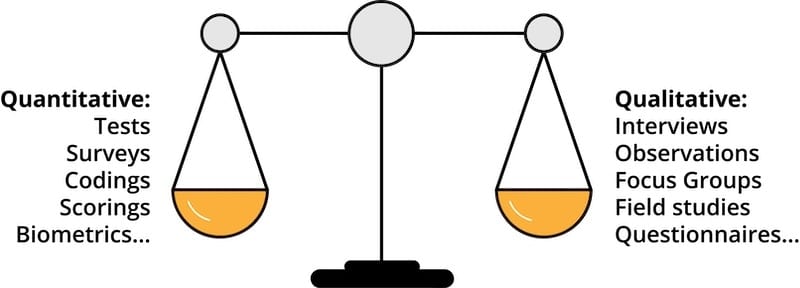
Behavioral Observation
Behavioral observation is one of the oldest tools for psychological research on human behavior. Researchers either visit people in their natural surroundings (field study) or invite individuals or groups to the laboratory.
Observations in the field have several benefits. Participants are typically more relaxed and less self-conscious when observed at home, at school or at the workplace. Everything is familiar to them, permitting relatively unfiltered observation of behavior which is embedded into the natural surroundings of the individual or group of interest.
However, there’s always the risk of distraction – shouting neighbors or phones ringing. Field observations are an ideal starting point of any behavioral research study. Just sitting and watching people offers tremendous amounts of insights if you’re able to focus on a specific question or aspect of behavior.
Observation in the laboratory, by contrast, allows much more experimental control. You can exclude any unwanted aspects and completely ban smart phones, control the room layout and make sure to have everything prepared for optimal recording conditions (correct lighting conditions, ensuring a quiet environment, and so on).
You can create near-realistic laboratory environments – building a typical family living room, office space or creative zone, for example, to make respondents feel at ease and facilitating more natural behavior.

Surveys and Questionnaires
Surveys and questionnaires are an excellent tool to capture self-reported behaviors and skills, mental or emotional states or personality profiles of your respondents. However, questionnaires are always just momentary snapshots and capture only certain aspects of a person’s behavior, thoughts and emotions.
Surveys and questionnaires typically measure what Kahneman would describe as system 2 processes – thoughts that are carried out slowly and deliberately. System 1 processes – thoughts that are fast and automatic – can be measured by other methods that detect quick physiological changes.

Focus groups
In market research, focus groups typically consist of a small number of respondents (about 4–15) brought together with a moderator to focus on beliefs and attitudes towards a product, service, concept, advertisement, idea or packaging. Focus groups are qualitative tools as their goal is to discuss in the group instead of coming to individual conclusions.
What are the benefits of a product, what are the drawbacks, where could it be optimized, who are ideal target populations? All of these questions can be addressed in a focus group.
Beyond Surveys and Focus Groups
While surveys and focus groups can be instrumental in understanding our conscious thoughts and emotions, there is more to human behavior than meets the eye. The subconscious mind determines how our behavior is ultimately carried out, and only a small fraction of that is accessible from traditional methodologies – using surveys and focus groups.
As some researchers have claimed, up to 90% of our actions are guided by the subconscious. While the other 10% is important, it is clear that there is much to gain by probing further than what is tested by traditional methods.
Modern approaches aim to explore the hidden and uncharted territory of the subconscious, by measuring reliable outputs that provide deeper information about what someone is really thinking.

Biosensors for Learning About Human Behaviour
In addition to observing overt behavior, you can use biosensors and measurement devices in order to understand how mind, brain and body interact.
Biosensors give access to otherwise hidden processes. These usually hidden processes (at least to an observer) can give indications about the thought processes that Daniel Kahneman would describe as belonging to System 1 – fast and largely emotionally driven reactions. These reactions are quick processes that underlie a large portion of our decision-making and our resulting behavior.
Eye tracking
offers incredible insights into visual attention above and beyond any other experimental method. While eye tracking is commonly used to monitor where we direct our eye movements at a certain point in time, it also tracks the dilation of the pupil.
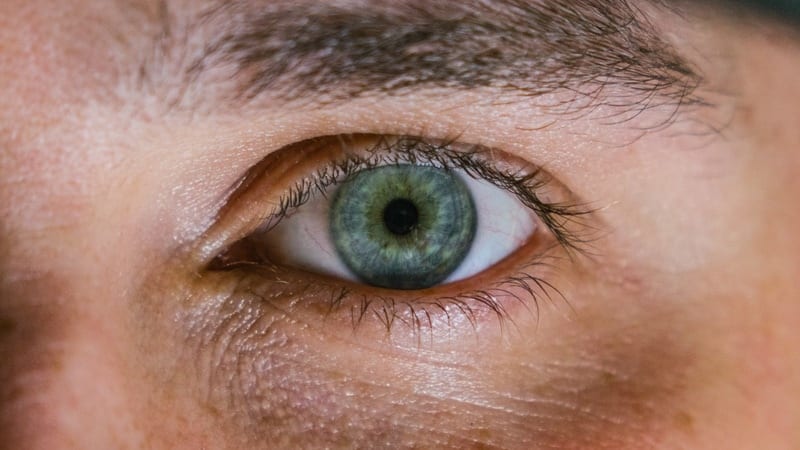
Electroencephalography (EEG)
is a neuroimaging technique measuring electrical activity generated by the brain from the scalp surface using sensors (electrodes) and amplifier systems. It is ideal for assessing brain activity associated with perception, cognition, and emotional processes.
Among all biosensors, EEG has the highest time resolution, thereby revealing substantial insights into sub-second brain dynamics of engagement, motivation, frustration, cognitive workload, and further metrics associated with stimulus processing, action preparation, and execution.
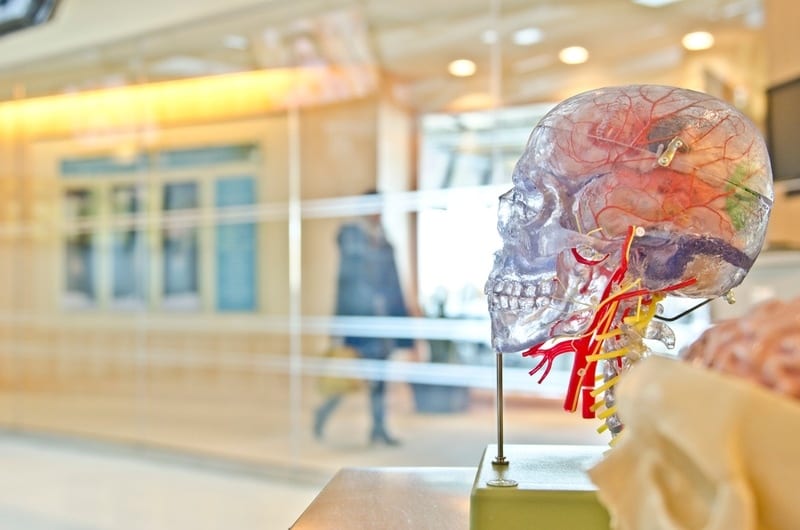
functional Near-Infrared Spectroscopy (fNIRS)
fNIRS records the diffusion of near-infrared light by human skull, scalp and brain tissue, allowing researchers to monitor cerebral blood flow in specified brain regions. While fNIRS is a relatively new technology, it has already proven to be a very promising tool in human behavior research.
Magnetic Resonance Imaging (MRI)
Whenever you would like to accomplish brain imaging with excellent spatial resolution, Magnetic Resonance Imaging (MRI) is the method of choice. MRI can be used to generate structural scans of high spatial precision, representing an accurate and highly precise 3D rendering of the respondent’s brain.
For examining dynamic changes in the brain, functional MRI (fMRI) can be used. The scanner uses magnetic fields and radio frequencies to measure changes in oxygenated and de-oxygenated blood flow in specific regions of the brain, that can then be related to cognitive processes.
Electrodermal activity (EDA)
EDA also referred to as galvanic skin response (GSR), reflects the amount of sweat secretion from sweat glands in our skin. Increased sweating results in higher skin conductivity. When exposed to emotional stimulation, we “sweat emotionally” – particularly on our forehead, hands and feet. Just as pupil dilation, skin conductance is controlled subconsciously, therefore offering tremendous insights into the unfiltered, unbiased emotional arousal of a person.

Facial Expressions
As facial expressions are tied to our inner emotions, and our emotions rule so much of our behavior, studying facial expressions gives an insight into the reasons for our actions.
Facial expression analysis is a non-intrusive method that assesses head position and orientation, micro-expressions (such as lifting of the eyebrows or opening of the mouth) and global facial expressions of basic emotions (joy, anger, surprise, etc.) using a webcam placed in front of the respondent. Facial data is extremely helpful to validate metrics of engagement, workload or drowsiness.

Electromyographic (EMG
Electromyographic (EMG) sensors monitor the electric energy generated by bodily movements of the face, hands or fingers, etc. You can use EMG to monitor muscular responses to any type of stimulus material to extract even subtle activation patterns associated with consciously controlled hand/finger movements (startle reflex). Also, facial EMG can be used to track smiles and frowns in order to infer one’s emotional valence.
Electorcardiography (EEG)
Track heart rate, or pulse, from electrocardiography (ECG) electrodes or optical sensors (Photoplethysmogram; PPG) to get insights into respondents’ physical state, anxiety and stress levels (arousal), and how changes in physiological state relate to their actions and decisions.
How to Put it Together for Human Behavior Psychology
While biosensor and imaging methods present unparalleled access into an individual‘s thoughts, feelings, and emotions, the best way to understand someone in entirety is to complement the measurements with more traditional methods, such as with surveys and focus groups.
By combining the measures, we‘re able to interpret both parts of what Kahneman described as System 1 and System 2 – both fast, emotionally driven decisions, as well as slow and deliberate decisions. Utilizing the insights offered by both routes of investigation gives a whole view of the thoughts and behaviors that an individual possesses.
The grid below summarizes the two methods in an overview, and shows how using both can answer a wide array of questions.

Human Behavior Metrics
Metrics are derived from observation or sensor data and reflect cognitive-affective processes underlying overt and covert actions. Typically, they are extracted using computer-based signal pre-processing techniques and statistics. In the following, we will describe the most important metrics in human behavior research.
Emotional valence
One of the most indicative aspects of emotional processing is your face. Facial expressions can be monitored either using facial electromyography (fEMG) sensors placed on certain facial muscles, or video-based facial expression analysis procedures. A very fine-tuned manual observation technique is the Facial Action Coding System (FACS) primarily designed by Paul Ekman. Trained coders, and sophisticated software, can evaluate the amount of activation of modular Action Units (AU), which represent very brief and subtle facial expressions lasting up to half a second.
Based on the sub-millisecond changes in muscular activation patterns or changes in global facial features (lifting an eyebrow, frowning, lifting up the corners of the mouth), behavioral researchers infer universal emotional states such as joy, anger, surprise, fear, contempt, disgust, sadness or confusion.

Emotional arousal
While facial expressions can provide insights into the general direction of an emotional response (positive – negative), they cannot tell the intensity of the felt emotion as described by means of arousal. Arousal refers to the physiological and psychological state of being responsive to stimuli and is relevant for any kind of regulation of consciousness, attention and information processing.
The human arousal system is considered to comprise several different but heavily interconnected neural systems in the brainstem and cortex.
Physiological arousal and emotional valence can be thought of as taking place on a scale, in which both interact with each other. The intensity of arousal therefore influences the intensity of emotion. Capturing data about both of these processes can provide more information about an individual and their behavior.
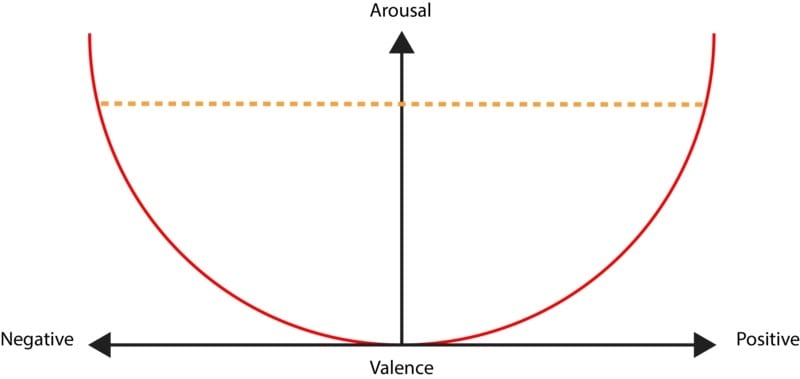
Although all of these processes are taking place on the microscopic level and cannot be observed with the eye, arousal can be measured by using several psychphysiological methods such as eye tracking, EEG, GSR, ECG, respiration, and more.
Workload and cognitive load
Decisions are often made under several constraints (with respect to time, space and resources), and there is obviously a threshold in how much information you can take into consideration. Working memory represents the cognitive system responsible for transient holding and processing of information, and human cognitive-behavioral research has a particular interest in this aspect due to its crucial role in the decision-making process.
The total amount of mental effort being used in working memory is typically referred to as cognitive load.
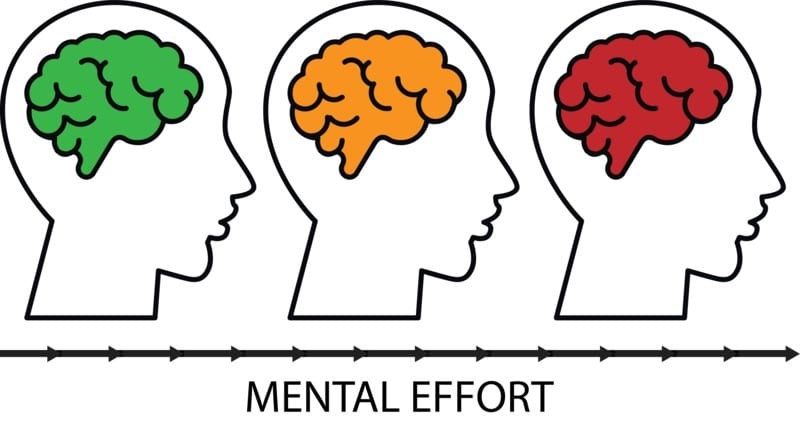
Perception and attention
Do stimuli “pop out” and elicit our interest? Do we watch a movie clip or an advertisement because it is visually captivating? For cognitive-behavioral scientists it is highly relevant to determine the level of saliency of stimuli, and whether or not it captures our attention. Saliency detection is considered to be a key attentional mechanism that facilitates learning and survival. It enables us to focus our limited perceptual and cognitive resources on the most pertinent subset of the available sensory data.

Motivation and engagement
Another metric relevant for cognitive-behavioral scientists is motivation, sometimes referred to as action motivation. It describes the drive for approaching/avoiding actions, objects and stimuli.
Shopping behavior is primarily driven by engagement and the underlying motivation to buy a product, therefore it would be beneficial to infer one’s motivation already during the initial exposure with an item. EEG experiments have provided rich evidence for certain brain activation patterns reflecting increased or decreased motivational states.
Besides EEG, one’s level of attention can be determined based on eye tracking, both in lab settings as well as in real-world environments. Remote eye trackers are mounted in front of a computer or TV screen and record the respondents’ gaze position on screen.
Eye tracking glasses are the optimal choice for monitoring attentional changes in freely moving subjects, allowing you to extract measures of attention in real-world environments such as in-store shopping or package testing scenarios.

Application Fields in Study of Human Behavior Psychology
Consumer neuroscience and neuromarketing
There is no doubt about it: Evaluating consumer preferences and delivering persuasive communication are critical elements in marketing. While self-reports and questionnaires might be ideal tools to get insights into respondents’ attitudes and awareness, they might be limited in capturing emotional responses unbiased by self-awareness and social desirability.
As only so much of our overt, conscious behavior is captured by traditional methods such as surveys and focus groups, biosensors offer a way to fill that gap.
Psychological research
Psychologists analyze how we respond emotionally towards external and internal stimuli, how we think about ourselves and others, and how we behave. In systematic studies, researchers can measure and vary stimulus properties (color, shape, duration of presentation) and social expectations in order to evaluate how personality characteristics and individual learning histories impact emotional, cognitive and perceptual processing.
Media testing and advertising
In media research, individual respondents or focus groups can be exposed to TV advertisements, trailers and full-length pilots while monitoring their behavioral responses, for example, using facial expression analysis. Identifying scenes where emotional responses were expected but the audience just didn’t “get it” is crucial to refining the appeal of the TV-program. Facial expression analysis can also be used to find the key frames that result in the most extreme facial expressions – showing when the program really landed on target.
Software UI and website design
Ideally, handling software and navigating websites should be a pleasant experience – frustration and confusion levels should certainly be kept as low as possible. Monitoring user behavior, for example based on scrolling or click-ratio as well as facial expressions, while testers browse websites or software dialogs can provide insights into the emotional satisfaction of the desired target group.
Eye tracking is a particularly useful technology, as it helps pinpoint exactly what the person is looking at during their experience with the website. When combined with other measures, it gives an insight into what exactly gave them a positive or negative feeling during the interaction.

Conclusion
Human behavior is a multi-faceted and dynamic field of study, requiring many points of interrogation to yield insights. Learning processes lay the foundation for determining many of our behaviors, although we are constantly changing in response to our environment. Understanding our behaviors is a tricky task, but one that we are getting ever closer to accomplishing. Traditional methods of study have taught us many things, and now biosensors can lead the way.
I hope you’ve enjoyed reading this snippet from our Complete Pocket Guide to Human Behavior – if you’d like to learn even more and become a true expert in human behavior, then download our free guide below!
Free 52-page Human Behavior Guide
For Beginners and Intermediates
- Get accessible and comprehensive walkthrough
- Valuable human behavior research insight
- Learn how to take your research to the next level






